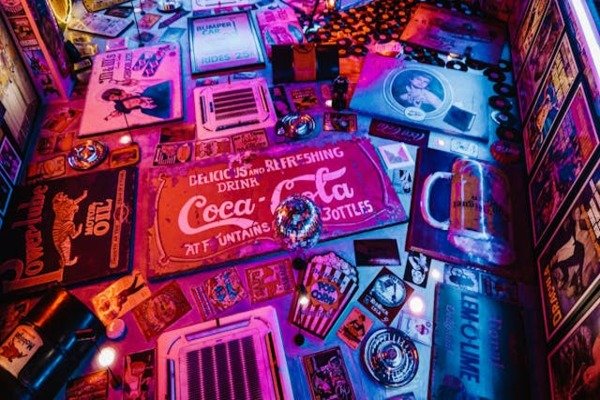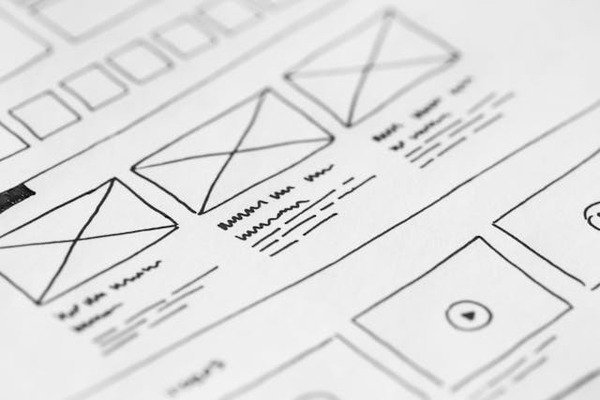Is Web Design The Same As Graphic Design? Key Differences
When comparing web design and graphic design, understanding their unique roles is crucial. While they often collaborate, each has distinct skill sets that serve different purposes. Many people assume they are interchangeable, but in reality, web design focuses on digital functionality, while graphic design is centered around visual storytelling. Whether you’re a business owner planning a website revamp or someone exploring career options, knowing these differences can help you make informed decisions.
In this guide, we’ll break down the core distinctions between graphic design and web design, highlight their similarities, and explore how they complement each other. By the end, you’ll have a clear understanding of which field aligns with your needs—whether you’re hiring a professional or considering a career in design.

Graphic Design vs. Web Design: Understanding the Key Differences
When it comes to digital and print creativity, graphic design and web design play crucial yet distinct roles. While both fields focus on visual aesthetics, the technical skills required for each differ significantly. Understanding these differences can help you choose the right professional for your project.
What Does a Graphic Designer Do?
Graphic designers specialize in crafting visually appealing designs for print and digital media. Their expertise lies in using creativity, color theory, typography, and composition to create impactful marketing materials. If you need a logo, print ads, brochures, social media images, or newsletters, a graphic designer is the right choice.
What Does a Web Designer Do?
Web designers focus on creating and optimizing websites for functionality and user experience. Unlike graphic designers, they require knowledge of programming languages like HTML, CSS, and JavaScript to ensure websites are responsive and mobile-friendly. Web designers handle tasks such as:
- Designing and building websites
- Optimizing site speed and performance
- Ensuring mobile responsiveness
- Improving navigation for better user experience
If you need a visually appealing and high-performing website, a web designer is the right professional to hire.
Choosing the Right Designer for Your Needs
Both graphic design and web design require creative thinking, but their applications differ. If you need branding and marketing materials, a graphic designer will bring your vision to life. However, if you’re looking to build or improve a website, a web designer will ensure a seamless digital experience.
By understanding the differences between these two fields, you can make informed decisions when hiring a designer for your business or project.

What Is Graphic Design? A Clear and Practical Guide
Understanding Graphic Design
Graphic design is the art and practice of creating visual content to communicate a specific message. It blends creativity with strategy, using images, typography, and layout techniques to convey ideas effectively. Whether for artistic expression or commercial purposes, graphic design transforms thoughts into visually compelling messages.
Why Graphic Design Matters
Graphic design plays a crucial role in communication, helping businesses, brands, and individuals engage with their audience. From marketing campaigns to product packaging and website interfaces, it shapes how information is presented and perceived. A well-designed visual can enhance a brand’s identity, increase engagement, and make content more memorable.
The Power of Visual Storytelling
In today’s digital world, compelling visuals are essential for grabbing attention and delivering clear messages. Whether you’re designing a logo, an advertisement, or a social media post, graphic design ensures your message is visually impactful and easy to understand. By combining graphics and text strategically, it creates a seamless connection between content and audience.

Understanding Web Design: A Complete Guide
What Is Web Design?
Web design is the strategic process of planning, conceptualizing, and structuring digital content to create an engaging and functional online experience. It involves designing the visual layout, organizing content, and ensuring seamless navigation to enhance user accessibility across various devices, including desktops and mobile applications.
A well-designed website is more than just aesthetics; it is a blend of creativity and technical expertise. Web design encompasses the overall user interface (UI) and user experience (UX), ensuring that visitors can interact with a website effortlessly while enjoying a visually appealing layout.
Why Is Web Design Important?
Web design plays a crucial role in delivering a compelling and intuitive experience for users. A well-structured website not only attracts visitors but also helps retain them by providing smooth navigation, fast loading speeds, and an optimized interface that adapts to different screen sizes.
Moreover, web design impacts a site’s performance on search engines. Search engine optimization (SEO) techniques, such as mobile responsiveness and fast-loading pages, are directly influenced by web design practices. A poorly designed website can lead to higher bounce rates and decreased user engagement.
Key Elements of Web Design
- Visual Design & Storytelling
Web design is more than just selecting colors and fonts—it’s about crafting a visual narrative that resonates with the audience. The design should guide users through the website intuitively, creating a seamless journey that aligns with the brand’s identity. - Functionality & Performance
Beyond aesthetics, web design ensures that a website functions properly. This includes testing site performance, fixing bugs, and optimizing loading speeds. A well-functioning site improves user satisfaction and encourages longer browsing sessions. - User Interface (UI) & User Experience (UX)
A good web design enhances the UI and UX by making sure visitors can interact with the website effortlessly. This includes intuitive navigation, mobile responsiveness, and a clear call-to-action (CTA) that guides users towards their goals. - Optimization & Responsiveness
A great web design is not just about looking good—it must also perform well across all devices. Ensuring that a website is mobile-friendly and optimized for different screen sizes is essential for user engagement and search engine rankings.
Web Design vs. Graphic Design: Key Differences
When it comes to digital and visual communication, web design and graphic design play crucial roles but they are not the same. While they share some overlapping principles, their core differences lie in their purpose, tools, and skill sets. Understanding these differences is essential whether you are a business owner, aspiring designer, or looking to hire a professional.
This guide will break down the eight fundamental differences between web design and graphic design to help you make informed decisions and ensure the right approach for your project.
The Medium of Use: Print vs. Digital
The primary distinction between web design and graphic design is the medium in which they are utilized.
Web design focuses on digital experiences, creating layouts and interfaces for websites and applications that are interactive and accessible across various devices.
Graphic design, on the other hand, is primarily intended for print, such as brochures, posters, business cards, and packaging. Although graphic designs can be used online, their original purpose is often for static visuals.
Technical Skill Requirements
Web designers and graphic designers require different technical proficiencies:
Web designers must understand programming languages such as HTML, CSS, and JavaScript, alongside content management systems like WordPress.
Graphic designers do not need programming knowledge. Instead, they focus on software like Adobe Photoshop, Illustrator, and Canva to create visual elements.
Web design involves ongoing technical considerations such as loading speeds, responsive layouts, and usability, whereas graphic design is more concerned with visual aesthetics without the constraints of coding.
Dynamic vs. Permanent Design
Web design is dynamic and evolves over time. Websites require continuous updates, security patches, and content adjustments.
Graphic design is permanent once printed or published. While digital graphics can be updated, print materials require reprinting for modifications, making changes costly.
Interactivity: Static vs. Engaging
Web design is interactive, encouraging users to engage with elements such as buttons, navigation menus, animations, and forms.
Graphic design is static. While it can include visually appealing elements, the user cannot interact with it unless it is animated.
File Size and Resolution Constraints
Web designers must optimize images and files to ensure fast loading speeds and compatibility across devices. This requires:
Web-safe fonts and compressed image formats (JPEG, PNG, WebP)
Resolution adjustments for different screens
Graphic designers work with print resolutions and color modes such as:
High-resolution images (300 DPI for print)
CMYK color mode for printing vs. RGB for digital use
Typography Limitations
Typography plays a crucial role in both disciplines, but web designers face more restrictions:
Web typography is limited to web-safe fonts unless special embedding techniques like Google Fonts are used.
Graphic design allows complete freedom in font selection since designers control how the text appears in the final printed product.
Software and Tools Used
The tools used in web and graphic design differ significantly:
Web designers rely on tools such as Adobe XD, Figma, Sketch, and WordPress to build and prototype websites.
Graphic designers work with Adobe Photoshop, Illustrator, and InDesign to create visuals for print and online use.
Collaboration and Work Process
Web designers work closely with web developers to bring designs to life through coding and functionality testing. They also collaborate with UX designers and SEO specialists to ensure a seamless user experience.
Graphic designers typically work independently or with marketing teams to create branding materials, advertising campaigns, and print assets. Their process is less technical and more focused on aesthetics and message clarity.
Training and Experience: The Required Skill Sets
Both web designers and graphic designers require specialized training, but their expertise differs.
Web Designer Skills:
- Visual Design: Grid systems, color theory, typography
- User Experience (UX): Designing with the user in mind for accessibility and navigation
- Software Knowledge: Familiarity with industry tools like Sketch, Figma, and Photoshop
- Coding Skills: HTML, CSS, JavaScript, and frameworks like Bootstrap
- SEO and Performance Optimization: Ensuring websites are search-engine friendly and load efficiently
Graphic Designer Skills:
- Typography: Font selection and hierarchy for impactful designs
- Color Theory: Understanding RGB for digital and CMYK for print
- Brand Identity: Creating logos, business cards, and other marketing materials
- Photo Editing: Enhancing visuals through tools like Photoshop
- Design Principles: Knowledge of spacing, contrast, and alignment for aesthetic balance
Both professions also require essential soft skills like creativity, time management, collaboration, and problem-solving to excel in their roles.
Overall Roles: Web Designers vs. Graphic Designers
Web Designer Responsibilities:
- Designing website layouts, interfaces, and navigation
- Coding and testing website functionality
- Ensuring websites are responsive and mobile-friendly
- Updating and maintaining website content
- Collaborating with developers and UX specialists
Graphic Designer Responsibilities:
- Creating visual content for marketing and advertising
- Designing brand assets such as logos, brochures, and packaging
- Ensuring consistency in branding across different media
- Working with typography, imagery, and layout principles
- Enhancing user engagement through compelling visuals

Understanding Their Roles in Your Business
What Do Graphic Designers Do?
Graphic designers craft the visual identity of your brand, ensuring consistency across all platforms. Their work includes developing color palettes, logos, and typography that define your business’s aesthetic. They design imagery for books, advertisements, marketing campaigns, commercials, product packaging, and digital interfaces like apps and websites. Additionally, they create layouts, digital signage, and social media graphics to enhance brand presence. Staying updated with design trends, they ensure your brand remains modern and competitive in the market. Their creativity helps businesses establish a strong and memorable visual presence that connects with their target audience.
What Do Web Designers Do?
While graphic designers focus on visuals, web designers specialize in building functional and visually appealing websites. They integrate essential branding elements—such as logos, brand colors, and typography into a seamless web experience. Web designers prioritize user experience (UX) and user interface (UI) design, ensuring that your website is not only aesthetically pleasing but also easy to navigate. A well-designed website enhances customer engagement, boosts conversions, and strengthens your online presence.
By understanding the distinct roles of graphic designers and web designers, businesses can leverage their expertise to create a cohesive and powerful brand identity.
How Graphic Design and Web Design Work Together to Create Impactful Websites
The Crucial Connection Between Graphic and Web Design
Graphic design is a fundamental aspect of web design and development, shaping how a brand’s identity is visually communicated on a company’s website. It plays a pivotal role in enhancing brand awareness and elevating the overall user experience. When these two disciplines collaborate effectively, they ensure that a website is not only visually appealing but also highly functional and user-friendly.
For example, in blog design, both web designers and graphic designers must work in harmony. The web designer ensures seamless functionality and usability, while the graphic designer adds creative and aesthetic elements that bring the site to life. Without this collaboration, a website can fall short in engagement and impact.
Achieving the Perfect Balance Between Form and Function
The primary goal of both web and graphic design is to keep the audience at the center of the creative process. Understanding the users’ needs and expectations allows designers to craft an engaging visual experience while maintaining smooth navigation and usability.
Although the roles of web designers and graphic designers differ, they are complementary. Web designers focus on site functionality, performance, and structure, while graphic designers enhance the website’s aesthetic appeal through colors, typography, and imagery. When these two elements merge seamlessly, the result is a website that delivers both visually and functionally, exceeding user expectations.
By integrating creative design with intuitive web functionality, businesses can develop an online presence that captivates visitors, strengthens brand identity, and drives engagement.

Do You Need Both a Web and Graphic Designer? Here’s What You Should Know
Understanding the Difference Between Web and Graphic Design
It depends on your needs. While graphic designers may have some understanding of web design principles, web designers and developers specialize in the technical aspects of building functional, user-friendly websites. If a graphic designer lacks experience in website development, and vice versa, collaboration between both professionals becomes essential to create a seamless user experience.
Can One Person Do Both?
Technically, yes—but it can be challenging. A single individual handling both web and graphic design must juggle different skill sets, which can be time-consuming and complex. While it’s possible, the process can be tedious, especially when trying to maintain high-quality visuals and a well-structured website simultaneously.
Why Having Both Experts Matters
Each role has a distinct specialty. A graphic designer focuses on aesthetics, branding, and visual storytelling, while a web designer ensures that the website is functional, responsive, and optimized for user experience. If one person attempts to manage both without adequate expertise, the project may suffer in terms of efficiency and quality.
If your budget allows, hiring both a web designer and a graphic designer ensures that your brand’s online presence is visually appealing and functionally effective. By leveraging the strengths of each professional, you create a more engaging and seamless experience for your audience, ultimately improving your website’s impact.
Conclusion
Understanding the differences between web design and graphic design is essential for making informed decisions in business and career choices. While graphic design focuses on creating compelling visual assets, web design ensures digital functionality and user experience. Both fields require unique skill sets and tools but complement each other in creating a seamless brand presence. If you need a visually appealing and high-performing website, hiring both a web and graphic designer can provide the best results. Whether you’re building a brand, launching a business, or enhancing your online presence, knowing when to engage a graphic designer or a web designer will help you achieve your goals efficiently. By leveraging the strengths of both professionals, you create a cohesive and effective design strategy that enhances user engagement and strengthens brand identity.
FAQs
Is web design the same as graphic design?
No, web design focuses on website functionality and user experience, while graphic design creates visual assets for branding and marketing.
Can a web designer do graphic design work?
Some web designers have graphic design skills, but their primary focus is website structure, navigation, and digital user experience.
What software do web designers and graphic designers use?
Web designers use tools like Figma, Adobe XD, and WordPress, while graphic designers rely on Photoshop, Illustrator, and InDesign.
Why is web design important for SEO?
Good web design ensures fast loading speeds, mobile responsiveness, and clear navigation, all of which improve search engine rankings.
Should I hire both a web designer and a graphic designer?
If you want a well-branded and functional website, hiring both professionals ensures a visually appealing and user-friendly experience.
Users Also Say
m***x*l****ion****s
Most of this is overly complicated, primarily because it’s all built on a common but erroneous perception that graphic design is print design.
All web designers are graphic designers. Graphic design is the overall umbrella. A web designer is a graphic designer for web.
Within graphic design you can also have web designers, mobile designers, editorial designers, logo designers, type designers, poster designers, packaging designers, etc etc. They are all graphic designers.
****k**H
“web design” is just a facade built on the foundation that is “graphic design”.
The fundamentals of visual communication will never change, but the tools and trends will (and its your job to keep up and encourage change to happen faster).
